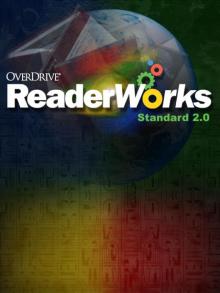- Home
- Неизвестный
The Social Costs of Pornography: A Collection of Papers
The Social Costs of Pornography: A Collection of Papers Read online
THE SOCIAL COSTS
OF PORNOGRAPHY
THE SOCIAL COSTS
OF PORNOGRAPHY
A
COLLECTION OF PAPERS
Edited by
JAMES R. STONER, JR.
and
DONNA M. HUGHES
A project of the Witherspoon Institute in collaboration with the
Social Trends Institute, Barcelona and New York, and the Institute
for the Psychological Sciences, Arlington, Virginia
Published by the Witherspoon Institute
2010
Copyright © 2010 by the Witherspoon Institute, Inc.
All rights reserved.
No part of this publication may be reproduced or transmitted in any form or by any means, electronic or mechanical, including photocopy, recording, or any information storage and retrieval system now known or to be invented, without permission in writing from the publisher, except by a reviewer who wishes to quote brief passages in connection with a review written for inclusion in a magazine, newspaper, or broadcast.
Text on pages 21 to 56 taken from “Acquiring Tastes and Loves,” from The Brain That Changes Itself: Stories of Personal Triumph from the Frontiers of Brain Science, by Norman Doidge, copyright © 2007 by Norman Doidge, used by permission of Viking Penguin, a division of Penguin Group (USA) Inc.
Book and jacket design by Design4 Marketing Communications
Layout by Trejo Production
Printing by Thomson-Shore
Published in the United States by the Witherspoon Institute
16 Stockton Street, Princeton, New Jersey 08540
Library of Congress Control Number: 2010928708
ISBN: 9780981491134
Printed in the United States of America
TABLE OF CONTENTS
Acknowledgments
Foreword
Introduction
PART ONE: EVIDENCE OF HARM
From Pornography to Porno to Porn: How Porn Became the Norm
Pamela Paul
Acquiring Tastes and Loves: What Neuroplasticity Teaches Us About Sexual Attraction and Love
Norman Doidge
Pornography and Violence: A New Look at the Research
Mary Anne Layden
The Impact of Pornography on Women: Social Science Findings and Clinical Observations
Jill C. Manning
Pornography’s Effects on Interpersonal Relationships
Ana J. Bridges
PART TWO: MORAL PERSPECTIVE
The Abuse of Sex
Roger Scruton
Pornography: Settling the Question in Principle.
Hadley Arkes
Desire and the Tainted Soul: Islamic Insights into Lust, Chastity, and Love
Hamza Yusuf
PART THREE: DILEMMAS OF LAW AND POLICY
Freedom, Virtue, and the Politics of Regulating Pornography
James R. Stoner, Jr.
Industry Size, Measurement, and Social Costs
K. Doran
The Moral Bases for Legal Regulation of Pornography
Gerard V. Bradley
Contributors
Appendix: Selected Research Findings
A Note on the Witherspoon Institute
A Note on the Social Trends Institute
A Note on the Institute for the Psychological Sciences
Endnotes
ACKNOWLEDGMENTS
Despite what jesters might say, studying pornography and its consequences is a troubling task, lightened in our case by the dedication of a group of true professionals. Luis Tellez of the Witherspoon Institute drew together a variety of scholars and supporters to initiate this project, and he oversaw its progress to completion, a task of several years. Roger Scruton and Gladys Sweeney of the Institute for the Psychological Sciences in Arlington, Virginia, were involved in the first conversations and helped bring many fine people to the initial consultation in Princeton in December 2008. Funding for that consultation, and for subsequent dissemination of its findings, was provided by the Social Trends Institute, the Caster Family Trust, and the Stuart Family Foundation. Planning of consultation details and gathering of papers afterwards fell to Patrick Hough, ever an attentive coordinator, and he was assisted by others on the Witherspoon staff, including Duncan Sahner and John Doherty. Mary Eberstadt’s work on the companion Statement of Findings and Recommendations helped bring our own work into focus, and David Mills’ superb lineediting improved many a draft. In the final production of the book, we were joined by a number of talented individuals: Bryan Ickes of Design4 Marketing Communications, who designed the book and its jacket; Margaret Trejo, who cheerfully and efficiently laid out the pages; and Megan Holobowicz and A. J. Marsh, who wrote and checked the index, respectively. Finally, more than anyone else, Alicia Brzycki’s patience and persistence insured the completion of the book and its precision. She was effectively our managing editor or, as the quip went at Witherspoon, our “book quarterback,” but in fact she kept the focus on the larger cause this volume is meant to serve.
Please note that this Collection of Papers contains graphic language to convey the reality of contemporary pornography and its impact on men, women, and children.
FOREWORD
Jean Bethke Elshtain
Pornography is as old as Western culture itself. Greek vases were often adorned with images that went beyond the erotic—at least to the ordinary eye—and embraced the pornographic. So long as human beings inhabit the earth, pornography will be present. But in what form? How pervasive is it? What harm might it do? Do we have solid evidence that attempts to curtail or curb pornography actually work?
I used to be much more of a “live and let live” person on this issue, years ago, in part because some of those who pushed for the censorship of pornography were so authoritarian. But the new technology has sent me in another direction. I just cannot, for example, fathom the ways in which child pornography is so pervasive and scoops up even babies into its disgusting maw. One doesn’t even want to think about such matters, but think about them we must.
In a liberal society, such as our own, we are deeded a rather impoverished language with which to confront issues such as pornography: individualism, privacy, harm (or no-harm, as the case may be). To try to inject community, or the common good, or even shared public reason into the discussion is to court charges of censorship, moralistic prudery, and all the rest. The Supreme Court in the past has tried, and largely failed, to put the matter to rest. So where does this leave us? Are there no solid, flexible options at all?
HIGHLY FRAUGHT MATTERS
This volume explores the highly fraught matters that pornography presents. First, is there solid evidence that pornography harms people and that this harm extends beyond the individual user himself? Second, what moral perspectives can we bring to bear in order to raise public discourse about such matters? Third, can pornography be regulated and curbed constitutionally? Going beyond the hysteria that often (from all sides) accompanies these questions, the authors parse matters with solid evidence, wise analogies, acute clarification, and surprising even-handedness. I say “surprising” because The Social Costs of Pornography: A Collection of Papers is clearly on one side of the debate, and often one side or the other in such fraught matters gives no credit to, and allows no decent arguments from, its opponents. Not so here. Many of the arguments of opponents are rehearsed and responded to clearly and coherently.
Any serious confrontation with pornography must grapple with the “signs of the times.” There is something new and clearly ominous about pornography today, namely, its ubiqui
ty and ease of access, the ever more explicit and often violent forms that it takes, and its normalization.
No one is excluded from the new pornography’s reach—neither the old nor the young, neither the able-bodied nor the disabled, no race, no sexual orientation— everything and everyone, it seems, is fair game. Astonishingly, many young people offer themselves up as pornographic subjects, filming and texting themselves in pornographic poses. Some would call them “erotic,” I suppose. Minimally, one might say that self-pornography is peculiar because one violates one’s own privacy.
Today also the sexual and the violent are so often fused into images of bodies, mostly females, destroyed, slaughtered in a variety of ingenious and cruel ways. Defenders of the use of such images even in mainstream television programs say they are, in fact, alerting people to cruelty against women and trying to fight it by displaying how terrible it really is. This is thin. Images may evoke pity and terror, yes, but they are as likely to incite and to excite, to cross yet another barrier. Those incited are keen for more . . . and more . . . and more yet again. On this score, we have solid, clear empirical evidence.
Even more troubling is the horror of child pornography. Almost beyond belief, babies as young as two months have been abused as pornographic subjects. Whether “real” or “virtual” (and herein lies another complexity), children, male and female, are ravished and demeaned in pornography geared to pedophiles, heterosexual and homosexual. Every taste and inclination is catered to; nothing is off-limits. You want gang-rape of a ten-year-old? That can be arranged. There are cases of a parent selling her child—yes, selling—to pornographers, usually to feed a drug habit. Those of us who observe these matters from a distance find it difficult to conjure how persons on the front lines of such activities and crimes manage to keep their humanity intact, to find a way to sleep at night with their moral sense securely in place. It cannot be easy.
Another “sign of the times” is the fact that pornography is now normalized. In the past it was largely isolated, confined to the “red light” districts in our cities. If you wanted to indulge in pornographic materials and shows, you trekked to that place and purchased its wares. These sites were sleazy and clearly marked as unsavory. Foreword xi By insulating and isolating the red light districts, communities signaled that pornography was not something common and good, that they might not be able to stop it, but they can damn sure limit it and surround it with a sense of the marginal and the shameful.
We now live in a shameless age. Everything is revealed. There are no barriers of privacy any longer—that barrier was breached a long time ago. Ironic, is it not, that those violating the privacy that should protect the human body from public glare and misuse evoke “privacy” in order to degrade and to display that very body? But one of the many bizarre realities of our cultural moment.
I can recall the first time I saw a breast bared in the movies. I remember very little about the film—I don’t think it was very good—but I can recall my reaction, a frisson that said to me a barrier had been breached and there was no way of repairing it. Of course, nudity in films can be done tastefully and delicately or crudely and pornographically. But to open up such images—no matter how well done—means, over time, their normalization. Then the temptation to go further and yet further and to shock rather than admire takes over.
What I am getting at in this list of “signs of the times” is that pornography cannot be treated as a highly abstract constitutional question. It penetrates lives and communities. It crosses boundaries of all kinds, geographic and moral. It affronts the dignity of the human person. Lives are frequently ruined in the process. I have known two marriages broken up by the addiction of one partner (the male in each case) to pornography. I do not refer to a few hours here or there, but to daily immersion in pornographic images for hours on end. The other spouse is neglected or transformed into another pornographic subject, or is enjoined to become such.
Modern technology being what it is and human nature being what it is, I assume that pornography will always be among us. I am no proponent of a utopia of punishment or sanctions. What we can do to try to stop it from spreading like an ugly fungus over all that it touches is to resist its allure ourselves, to criminalize— and then enforce the law—certain pornographic activities involving children, to enforce laws that now exist against cruelty and abuse of the sort that is often featured in modern pornography.
None of this is easy. A pornographer shut down one day will likely pop up the next somewhere else. It seems hopeless. But it is not. Any decent society will want ongoingly to signal that there are activities of which it disapproves, that it is by no means neutral about.
And it will do more. The most solid barrier against turning children into objects of pornographic abuse is a strong, intact family, a strong form of moral formation of the young so children come to respect and honor themselves and their own bodies, a wider social surround that creates barriers to sexual license and predation. The more transient, dislocated, drug-ridden, and broken-down a place is, the more likely it is that pornography will have a central role in that place. No place is immune, of course. But the evidence tells us that the gap between seeing and doing is eclipsed where social norms have collapsed and barriers to horrific behavior are loosened.
We should in doing all this be sensitive to the undeniable reality of the beauty of the human body as displayed in art, in sculpture, in literature. No one would call Michelangelo’s magnificent “David” a pornographic statue. Some have, but the designation does not stick. The artist’s appreciation of the human form is clear. His accomplishment is to represent that body in its beauty and dignity. What a contrast to the degradations of modern pornography in its slovenly or bestial forms.
PORNOGRAPHY’S HARM
It is very difficult to think about the ways anyone might be harmed by “David.” It is very easy to contemplate the many ways we can all be harmed by contemporary pornography. This volume explores such questions wisely and well. But in order to deal with pornography wisely and well on the level of public conviction and public policy, we must first convince people that pornography is not an exclusively “private” matter, that its tentacles reach into the interstices of the human mind and into the heart and soul of human cultures and communities.
So: Welcome to this subject, yet again. It is likely not the first time the reader has confronted the question of pornography, and no doubt it will not be the last. I hope the analyses, the data, the arguments, and the images that flow forth from the pages of The Social Costs of Pornography: A Collection of Papers will assist the reader in the future to avoid the pitfalls of unrestrained libertarianism, on the one hand, and unrestrained top-down censoriousness, on the other. The “moral” need not be the cramped and cribbed “moralistic.”
The point to be considered is: What sort of community is this? Is it reasonably decent and kind? Is it a fit place for human habitation, especially for the young? What happens to the most vulnerable among us? How do we ill-dignify the human body, and how do we forestall such affronts? These questions are not easy, but this learned volume helps push the debate forward in discerning ways.
THE SOCIAL COSTS
OF PORNOGRAPHY
INTRODUCTION
James R. Stoner, Jr., and Donna M. Hughes
What are the costs and consequences of the widespread availability and use of pornography in society today? A generation or two ago, in the United States and throughout the Western world, it was decided that the social costs of pornography were not so high as to warrant the imposition on personal freedom that government suppression or regulation of pornography entailed.
In part because of changed attitudes, in part as a result of new constitutional doctrine that gave First Amendment protection to expression previously suppressed as obscene, America embarked on an experiment that effectively allowed the production and dissemination of pornography except when it involved children. Simultaneously, new technologies emerged that have brok
en down many of the physical barriers to pornography use. Now, instead of having to travel across town or to buy under the counter, consumers can access pornographic images and films from around the world in an instant on their home computers and on phones they carry in their pockets, much of it for free.
What are the results of this experiment and the new environment that accompanies it? The authors whose papers are collected in this volume have concluded that the evidence is unmistakable: The social costs of pornography today, insofar as they can be calculated, are high, and the risks of its continued easy availability may be greater still. As summarized in the companion document, The Social Costs of Pornography: A Statement of Findings and Recommendations, pornography has become increasingly available and increasingly “hard-core,” and it harms not only innocent women and children but its users as well.
Some of the evidence of harm has been subjected to statistical analysis by social science methods; some of the evidence is clinical, which adds a personal immediacy. Moreover, philosophical analysis and reflection on the meaning of sexuality in human life has clarified the wrong to the person and the community that the use of pornography entails, while neuroscience is learning how to explain the addictive behavior now widely experienced by online pornography viewers and their need for ever more graphic or violent imagery. In short, pornography damages the moral ecology of contemporary society. It unravels lives, communities, and as Roger Scruton writes memorably below, love itself.

 The Bolivian Diary
The Bolivian Diary Caffeine Blues_ Wake Up to the Hidden Dangers of America's #1 Drug ( PDFDrive )
Caffeine Blues_ Wake Up to the Hidden Dangers of America's #1 Drug ( PDFDrive ) The Empty House
The Empty House T Thorn Coyle Evolutionary Witchcraft (pdf)
T Thorn Coyle Evolutionary Witchcraft (pdf)![K J Emrick & Kathryn De Winter - [Moonlight Bay Psychic Mystery 01-06] - A Friend in; on the Rocks; Feature Presentation; Manor of; by Chocolate Cake; A-Maze-Ing Death (retail) (epub) Read online](http://freenovelread.comhttps://picture.efrem.net/img/nienyi/k_j_emrick_and_kathryn_de_winter_-_moonlight_bay_psychic_of_by_chocolate_cake_a-maze-ing_death_retail_epub_preview.jpg) K J Emrick & Kathryn De Winter - [Moonlight Bay Psychic Mystery 01-06] - A Friend in; on the Rocks; Feature Presentation; Manor of; by Chocolate Cake; A-Maze-Ing Death (retail) (epub)
K J Emrick & Kathryn De Winter - [Moonlight Bay Psychic Mystery 01-06] - A Friend in; on the Rocks; Feature Presentation; Manor of; by Chocolate Cake; A-Maze-Ing Death (retail) (epub) Next Day of the Condor
Next Day of the Condor Onyx
Onyx The Woodcock Game: An Italian Mystery Novel
The Woodcock Game: An Italian Mystery Novel Granta 122: Betrayal (Granta: The Magazine of New Writing)
Granta 122: Betrayal (Granta: The Magazine of New Writing) One More Dream
One More Dream Cosa Nostra by Emma Nichols) 16656409 (z-lib.org) (1)-compressed
Cosa Nostra by Emma Nichols) 16656409 (z-lib.org) (1)-compressed Cowboy by J. M. Snyder
Cowboy by J. M. Snyder Colossus
Colossus Star Trek - DS9 011 - Devil In The Sky
Star Trek - DS9 011 - Devil In The Sky Fright Mare-Women Write Horror
Fright Mare-Women Write Horror The Future Is Japanese
The Future Is Japanese In the Witching Hour
In the Witching Hour Mammoth Books presents Wang's Carpets
Mammoth Books presents Wang's Carpets The Cradle King: The Life of James VI and I, the First Monarch of a United Great Britain
The Cradle King: The Life of James VI and I, the First Monarch of a United Great Britain Stalking Moon
Stalking Moon Hostage To The Devil
Hostage To The Devil![Harris, Daisy - Mere Passion [Ocean Shifters 2] (Siren Publishing Classic) Read online](http://i1.bookreadfree.com/i/03/23/harris_daisy_-_mere_passion_ocean_shifters_2_siren_publishing_classic_preview.jpg) Harris, Daisy - Mere Passion [Ocean Shifters 2] (Siren Publishing Classic)
Harris, Daisy - Mere Passion [Ocean Shifters 2] (Siren Publishing Classic) Day, Sunny - Hot in Space (Siren Publishing Ménage and More)
Day, Sunny - Hot in Space (Siren Publishing Ménage and More) Five Books Of The Lives, Heroic Deeds And Sayings Of Gargantua And His Son Pantagruel
Five Books Of The Lives, Heroic Deeds And Sayings Of Gargantua And His Son Pantagruel I Never Thought I'd See You Again: A Novelists Inc. Anthology
I Never Thought I'd See You Again: A Novelists Inc. Anthology Billion dollar baby bargain.txt
Billion dollar baby bargain.txt![Chenery, Marisa - Turquoise Eye of Horus [Egyptian Shifters 1] (Siren Publishing Classic) Read online](http://i1.bookreadfree.com/i1/03/26/chenery_marisa_-_turquoise_eye_of_horus_egyptian_shifters_1_siren_publishing_classic_preview.jpg) Chenery, Marisa - Turquoise Eye of Horus [Egyptian Shifters 1] (Siren Publishing Classic)
Chenery, Marisa - Turquoise Eye of Horus [Egyptian Shifters 1] (Siren Publishing Classic) Cat Magic
Cat Magic Star Trek - DS9 - Warped
Star Trek - DS9 - Warped Catherine Coulter - FBI 1 The Cove
Catherine Coulter - FBI 1 The Cove Miranda Lee -The Blackmailed Bridegroom
Miranda Lee -The Blackmailed Bridegroom The Seashell Anthology of Great Poetry
The Seashell Anthology of Great Poetry Dragon Moon
Dragon Moon The Social Costs of Pornography: A Collection of Papers
The Social Costs of Pornography: A Collection of Papers That Is Not Dead
That Is Not Dead Best New Horror: Volume 25 (Mammoth Book of Best New Horror)
Best New Horror: Volume 25 (Mammoth Book of Best New Horror) This Christmas by J. M. Snyder
This Christmas by J. M. Snyder Faerie Cake Dead
Faerie Cake Dead CS-Dante's Twins
CS-Dante's Twins EFD1: Starship Goodwords (EFD Anthology Series from Carrick Publishing)
EFD1: Starship Goodwords (EFD Anthology Series from Carrick Publishing) Echo Burning by Lee Child
Echo Burning by Lee Child The Spinetinglers Anthology 2010
The Spinetinglers Anthology 2010 Wild Hearts
Wild Hearts Violet Winspear - Sinner ...
Violet Winspear - Sinner ... Broken Angels
Broken Angels FearNoEvil
FearNoEvil![Santiago, Lara - Range War Bride [Tasty Treats 11] (Siren Publishing PolyAmour) Read online](http://i1.bookreadfree.com/i1/03/30/santiago_lara_-_range_war_bride_tasty_treats_11_siren_publishing_polyamour_preview.jpg) Santiago, Lara - Range War Bride [Tasty Treats 11] (Siren Publishing PolyAmour)
Santiago, Lara - Range War Bride [Tasty Treats 11] (Siren Publishing PolyAmour) 8 Great Hebrew Short Novels
8 Great Hebrew Short Novels This Is How You Die: Stories of the Inscrutable, Infallible, Inescapable Machine of Death
This Is How You Die: Stories of the Inscrutable, Infallible, Inescapable Machine of Death The Steampowered Globe
The Steampowered Globe While We Wait by J. M. Snyder
While We Wait by J. M. Snyder Iron Tongue cr-4
Iron Tongue cr-4![Stieg Larsson [Millennium 02] The Girl Who Played with Fire v5.0 (LIT) Read online](http://i1.bookreadfree.com/i1/03/31/stieg_larsson_millennium_02_the_girl_who_played_with_fire_v5_0_lit_preview.jpg) Stieg Larsson [Millennium 02] The Girl Who Played with Fire v5.0 (LIT)
Stieg Larsson [Millennium 02] The Girl Who Played with Fire v5.0 (LIT) The Spinetinglers Anthology 2009
The Spinetinglers Anthology 2009 Bowles, Jan - Branded by the Texas Rancher (Siren Publishing Classic)
Bowles, Jan - Branded by the Texas Rancher (Siren Publishing Classic) Brown, Berengaria - Vivienne's Vacation (Siren Publishing Ménage and More)
Brown, Berengaria - Vivienne's Vacation (Siren Publishing Ménage and More) Inheritors
Inheritors Arthur Conan Doyle: A Life in Letters
Arthur Conan Doyle: A Life in Letters Cunningham, Pat - Coyote Moon (BookStrand Publishing Romance)
Cunningham, Pat - Coyote Moon (BookStrand Publishing Romance) Static Line
Static Line Ghost Mysteries & Sassy Witches (Cozy Mystery Multi-Novel Anthology)
Ghost Mysteries & Sassy Witches (Cozy Mystery Multi-Novel Anthology) Elizabeth Neff Walker - Puppy Love
Elizabeth Neff Walker - Puppy Love Ghosts in the Machine
Ghosts in the Machine Theater of the Crime (Alan Stewart and Vera Deward Murder Mysteries Book 6)
Theater of the Crime (Alan Stewart and Vera Deward Murder Mysteries Book 6) Red Satin Lips, Book One (The Surrender Series)
Red Satin Lips, Book One (The Surrender Series) Catherine Coulter - FBI 4 The Edge
Catherine Coulter - FBI 4 The Edge StateoftheUnion
StateoftheUnion Fantastic Women: 18 Tales of the Surreal and the Sublime from Tin House
Fantastic Women: 18 Tales of the Surreal and the Sublime from Tin House Sara Wood-Expectant Mistress original
Sara Wood-Expectant Mistress original Nine-to-Five Fantasies: Tales of Sex on the Job
Nine-to-Five Fantasies: Tales of Sex on the Job Granta 133
Granta 133 Dream Quest
Dream Quest The Warlock in Spite of Himself wisoh-2
The Warlock in Spite of Himself wisoh-2 Glenn, Stormy - Mating Heat (Siren Publishing Ménage Amour)
Glenn, Stormy - Mating Heat (Siren Publishing Ménage Amour) Davis, Lexie - Toys from Santa (Siren Publishing Classic)
Davis, Lexie - Toys from Santa (Siren Publishing Classic) Once Dead, Twice Shy
Once Dead, Twice Shy McSweeney's Enchanted Chamber of Astonishing Stories
McSweeney's Enchanted Chamber of Astonishing Stories Zombies: Shambling Through the Ages
Zombies: Shambling Through the Ages Baghdad Without a Map
Baghdad Without a Map Banshee Cries (the walker papers)
Banshee Cries (the walker papers) Fire and Fog cr-5
Fire and Fog cr-5 The Twelve Hot Days of Christmas
The Twelve Hot Days of Christmas The Relations of Vapor: Dot - Connivance
The Relations of Vapor: Dot - Connivance![Harris, Daisy - Mere Temptation [Ocean Shifters 1] (Siren Publishing Classic) Read online](http://i1.bookreadfree.com/i2/04/11/harris_daisy_-_mere_temptation_ocean_shifters_1_siren_publishing_classic_preview.jpg) Harris, Daisy - Mere Temptation [Ocean Shifters 1] (Siren Publishing Classic)
Harris, Daisy - Mere Temptation [Ocean Shifters 1] (Siren Publishing Classic) World of Mazes cr-3
World of Mazes cr-3 Mistaken Identity (A Jules Poiret Mystery Book 26)
Mistaken Identity (A Jules Poiret Mystery Book 26) Star Trek - DS9 - Fall of Terok Nor
Star Trek - DS9 - Fall of Terok Nor Not Like I'm Jealous or Anything: The Jealousy Book (Ruby Oliver)
Not Like I'm Jealous or Anything: The Jealousy Book (Ruby Oliver) Skaterboy by J. M. Snyder
Skaterboy by J. M. Snyder The Sorcerer_s Skull cr-2
The Sorcerer_s Skull cr-2 The Columbia Anthology of Modern Japanese Literature (Modern Asian Literature Series)
The Columbia Anthology of Modern Japanese Literature (Modern Asian Literature Series) New Erotica 5
New Erotica 5 Catherine Coulter - FBI 3 The Target
Catherine Coulter - FBI 3 The Target Best Sex Writing 2013: The State of Today's Sexual Culture
Best Sex Writing 2013: The State of Today's Sexual Culture Factoring Humanity
Factoring Humanity Huia Short Stories 11
Huia Short Stories 11 Call of the Wilds
Call of the Wilds Great English Short Stories (Dover Thrift Editions)
Great English Short Stories (Dover Thrift Editions)![Ramagos, Tonya - Logan's Lessons [Sunset Cowboys 2] (Siren Publishing Classic) Read online](http://i1.bookreadfree.com/i2/04/10/ramagos_tonya_-_logans_lessons_sunset_cowboys_2_siren_publishing_classic_preview.jpg) Ramagos, Tonya - Logan's Lessons [Sunset Cowboys 2] (Siren Publishing Classic)
Ramagos, Tonya - Logan's Lessons [Sunset Cowboys 2] (Siren Publishing Classic)![Morgan, Nicole - Sweet Redemption [Sweet Awakenings 1] (Siren Publishing Allure) Read online](http://i1.bookreadfree.com/i2/04/10/morgan_nicole_-_sweet_redemption_sweet_awakenings_1_siren_publishing_allure_preview.jpg) Morgan, Nicole - Sweet Redemption [Sweet Awakenings 1] (Siren Publishing Allure)
Morgan, Nicole - Sweet Redemption [Sweet Awakenings 1] (Siren Publishing Allure) Warbirds of Mars: Stories of the Fight!
Warbirds of Mars: Stories of the Fight! Original Version of Edited Godwin Stories(lit)
Original Version of Edited Godwin Stories(lit) Where The Hell is Boulevard?
Where The Hell is Boulevard?![Chemical [se]X Read online](http://i1.bookreadfree.com/i2/04/13/chemical_sex_preview.jpg) Chemical [se]X
Chemical [se]X Allison Brennan - See No Evil
Allison Brennan - See No Evil Sherlock Holmes Mystery Magazine #1
Sherlock Holmes Mystery Magazine #1